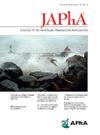医疗保险D部分综合药物审查后的医疗保健利用和支出。
IF 2.5
4区 医学
Q3 PHARMACOLOGY & PHARMACY
Journal of the American Pharmacists Association
Pub Date : 2025-09-24
DOI:10.1016/j.japh.2025.102930
引用次数: 0
摘要
背景:医疗保险D部分药物治疗管理(MTM)项目为符合条件的患者提供全面的药物审查(CMRs)。尽管MTM计划于2006年推出,但其益处仍未得到很好的理解,缺乏对大规模推广医疗保险人群的研究。目的:检查接受CMR对医疗保健利用和相关支出的有效性。方法:一项新的用户回顾性队列研究用于比较CMR接受者与符合条件但未接受CMR的医疗保险受益人的医疗保健利用和支出的变化。将MTM文件与住院、门诊和处方索赔联系起来,随机抽取20%的65岁及以上的医疗保险受益人样本,我们获得了533,550名CMR接受者和1,413,860名非接受者,并对531,314名CMR接受者和531,314名非接受者进行了倾向评分匹配。采用差中差模型比较CMR接受者和非接受者一年的急诊科和医院就诊概率和次数、住院、门诊、处方和总医疗支出。结果:与未接受CMR治疗的患者和分娩前一年相比,接受CMR治疗的患者在CMR分娩一年后急诊科就诊和住院的概率分别降低了0.49% (95% CI, 0.33%至0.64%)和1.72% (95% CI, 1.57%至1.88%)。同样,CMR接收导致每10,000名接受者分别减少80次住院时间(95% CI, 45至115)和337次急诊科就诊(95% CI, 305至370)。每个受益人的非处方医疗支出减少了378美元(95% CI= 314至442美元),而处方支出增加了470美元(95% CI= 436至503美元),导致接受者的总支出增加了91美元(95% CI= 20至164美元)。结论:本研究发现,与CMR相关的医疗保健利用减少表明,老年人的CMR可能有助于减少CMR后一年的非处方医疗保健支出。本文章由计算机程序翻译,如有差异,请以英文原文为准。
Health care utilization and spending following comprehensive medication review in Medicare part D
Background
The Medicare Part D medication therapy management (MTM) program provides comprehensive medication reviews (CMRs) to eligible patients. Despite its introduction in 2006, benefits of the MTM program are still not well understood, lacking research in large generalizable Medicare populations.
Objectives
To examine the effectiveness of receiving a CMR on health care utilizations and associated spending.
Methods
A new user retrospective cohort study was used to compare changes in healthcare utilization and spending in CMR recipients to a matched cohort of Medicare beneficiaries who were eligible, but did not receive a CMR. Linking MTM files to inpatient, outpatient, and prescription claims for a 20% random sample of Medicare beneficiaries aged 65 and older, we obtained 533,550 CMR recipients and 1,413,860 non-recipients, and a propensity score matched sample of 531,314 CMR recipients and 531,314 nonrecipients. Difference-in-difference models were used to compare the 1-year probability and number of emergency department (ED) and hospital visits, and inpatient, outpatient, and prescription and total health spending between CMR recipients and nonrecipients.
Results
Relative to CMR nonrecipients and the year prior to CMR delivery, CMR recipients experienced a 0.49% (95% confidence interval [CI], 0.33% to 0.64%%) and 1.72% (95% CI, 1.57% to 1.88%) lower probability of an ED visit and hospitalization 1 year after CMR delivery, respectively. Similarly, CMR receipt resulted in a reduction of 80 hospital stays (95% CI, 45 to 115) and 337 ED visits (95% CI, 305 to 370) per 10,000 recipients, respectively. Per beneficiary, non-prescription medical spending declined by $378 (95% CI = 314 to $442) while prescription spending increased by $470 (95% CI = $436 to $503) resulting in an additional $91 in total spending (95% CI = $20 to $164) among recipients.
Conclusion
Health care utilization reduction associated with CMR, found in this study, suggests that CMR in older adults may help reduce nonprescription health care expenditure in the year following CMR.
求助全文
通过发布文献求助,成功后即可免费获取论文全文。
去求助
来源期刊
CiteScore
3.30
自引率
14.30%
发文量
336
审稿时长
46 days
期刊介绍:
The Journal of the American Pharmacists Association is the official peer-reviewed journal of the American Pharmacists Association (APhA), providing information on pharmaceutical care, drug therapy, diseases and other health issues, trends in pharmacy practice and therapeutics, informed opinion, and original research. JAPhA publishes original research, reviews, experiences, and opinion articles that link science to contemporary pharmacy practice to improve patient care.

 求助内容:
求助内容: 应助结果提醒方式:
应助结果提醒方式:


